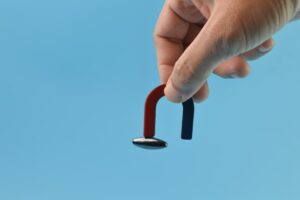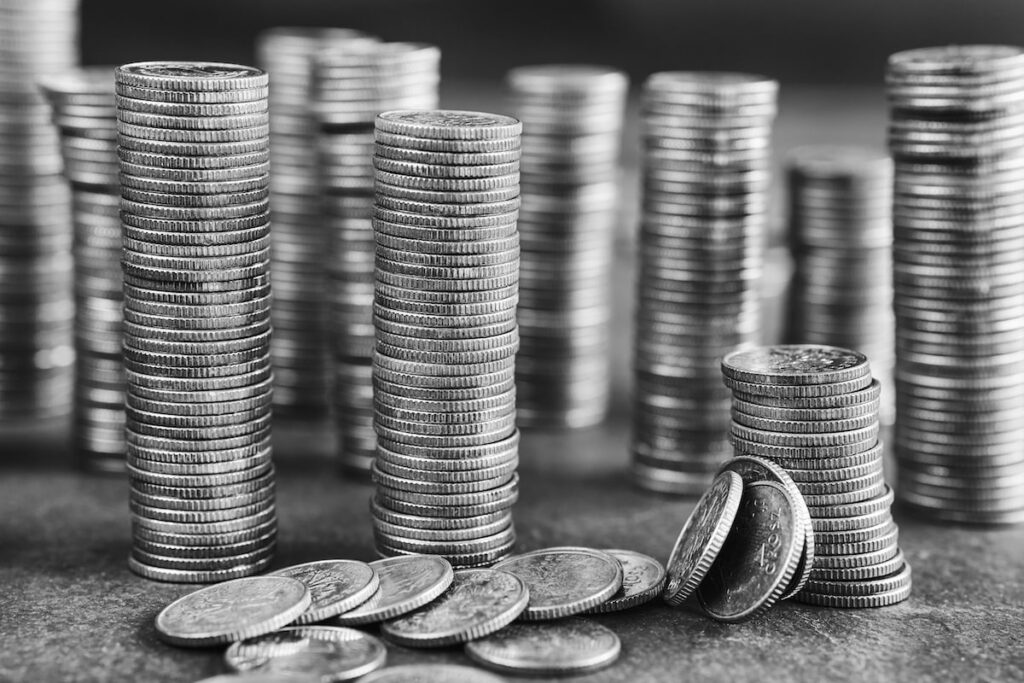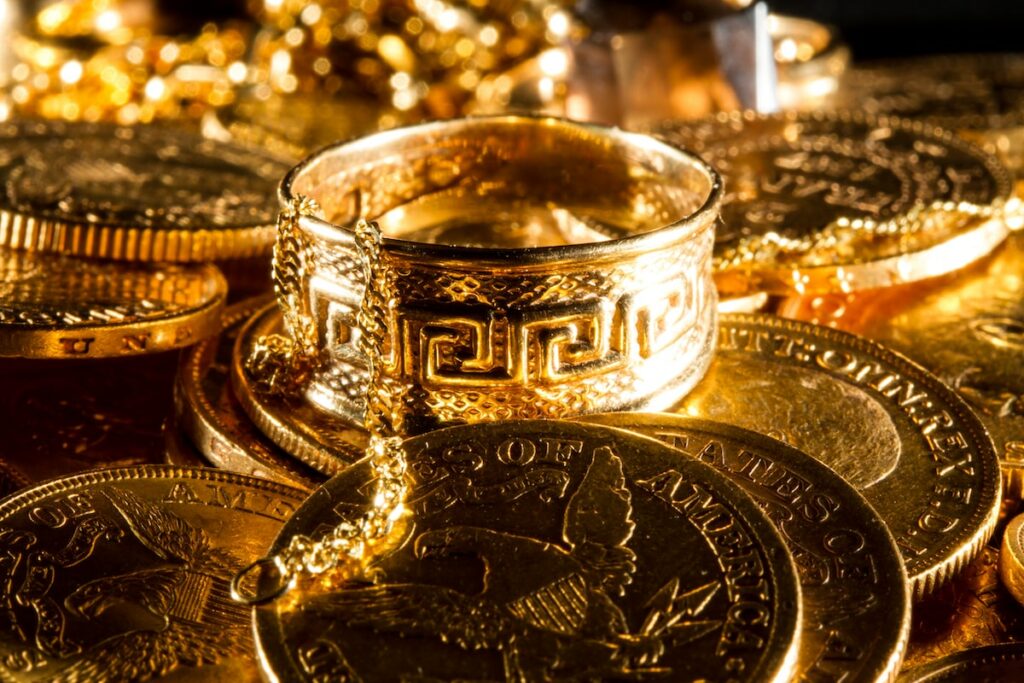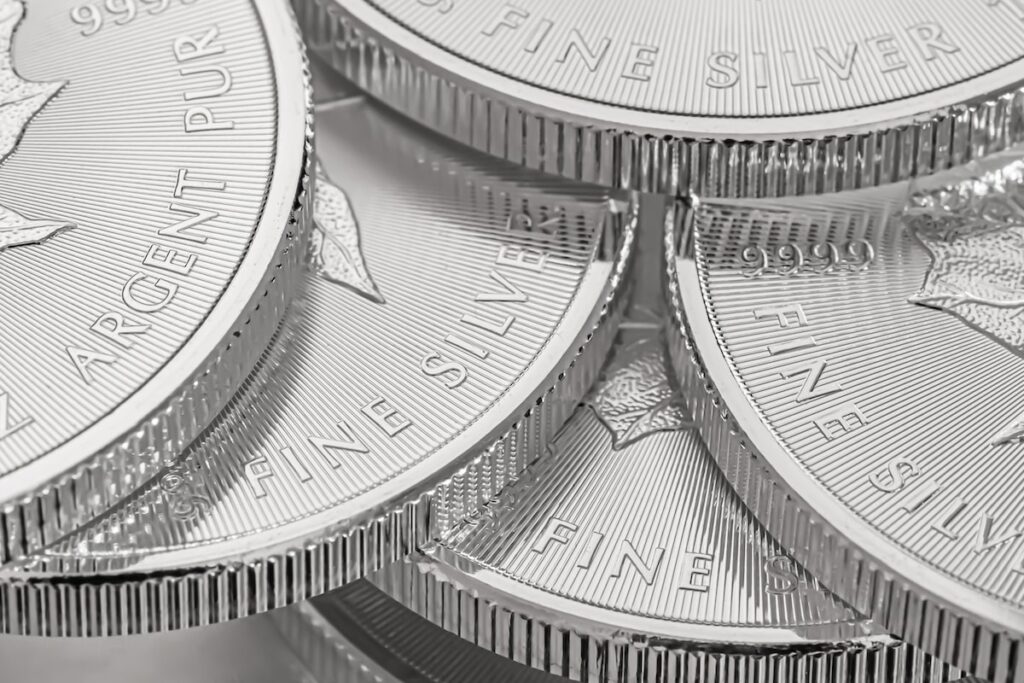Magnetism is a property of certain metals that causes attraction between them and a magnetized object.
There are many metals that are not magnetic, and you might wonder if silver is among them.
A magnet can not stick to silver as silver is a non-magnetic metal. Magnetic fields do interact with silver in certain ways but will never cause a magnet to stick to silver as it would to iron. If a magnet sticks to a silver piece, it is likely alloyed with one or more magnetic metals.
In fact, one of the easiest ways to check if a silver piece is real or not is to use a magnet.
Read on to learn more about how magnets and silver interact.
Will Silver Stick to a Magnet?
Only a handful of magnetic metals are magnetic at room temperature, namely iron, cobalt, and nickel.
These are the only metals that will exhibit magnetic properties.
Silver will not stick to a magnet unless it is alloyed with a metal that has magnetic properties. It would have to have a significant percentage of alloy metal for the magnet to stick.
Permanent Magnets
Permanent magnets are essentially pieces of metal that have been made to emit a permanent magnetic field by exposing them to strong magnetic fields.
Only certain metals can be made into permanent magnets.
Like other magnets, permanent magnets will not stick to silver.
The magnetic field does create a slight electric current in the silver, known as an eddy current, but it will not stick unless the silver has been alloyed with iron, nickel, or cobalt.
Earth Magnets
Rare earth magnets are powerful permanent magnets made from neodymium or samarium.
They are commonly used as a quick way to verify the authenticity of silver.
Silver will not stick to rare earth magnets, but a piece of silver might move slightly if a rare earth magnet is passed over it due to the electric current the magnetic field induces in silver.
The current interacts with the magnetic field, thereby creating movement.
Will Sterling Silver Stick to a Magnet?
Sterling silver is an alloy consisting of 92.5% silver, with the remaining 7.5% being either copper or nickel. If nickel is used as an alloying metal, it will make the silver slightly magnetic.
Sterling silver might have a weak magnetic interaction, but it should not stick to a magnet.
Can Silver Be Magnetized?
Silver cannot be magnetized, nor can it be turned into an electromagnet.
If a piece of silver becomes magnetized, this indicates that it has a reasonable quantity of ferrous metals in it, meaning it is either impure or, in the case of jewelry, silver-plated.
A common science experiment used to demonstrate the effects of magnets and their invisible fields is to magnetize another piece of metal — a nail, for example.
The magnet will be passed over the non-magnetized nail, eventually causing it to have its own magnetic field.
You might wonder if this would work with a piece of silver, too.
Only ferrous metals can be magnetized, and silver is decidedly non-ferrous.
Like copper, it is an excellent conductor of electricity but does not have the chemical properties required to become magnetic.
How Can You Tell if Something Is Pure Silver?
Silver is a valuable metal desirable for different reasonsc — it is useful in many industries and is a great investment.
It’s also a beautiful metal that can be used to create attractive pieces of jewelry, and has been used historically for currency in the form of coins that are prized by collectors.
Silver is often counterfeited due to its intrinsic value, but there are a few ways to tell if something is pure silver.
You can tell if something is pure silver by subjecting it to a magnet and conducting tests like the smell test and the ice test. Pure silver should never stick to a magnet. If it does, it means the item is either silver-plated or of low purity.
If a piece of silver passes the magnet test, this does not mean it is pure – there are many other metals that are nonmagnetic, so be sure to look for other signs that the piece is not authentic.
The best way to check would be to rely on the expertise of a local jeweler or bullion dealer.
They likely will not charge you, or they’ll charge just a small fee to test your silver.
The Ice Test
You can use ice to help verify the purity of your silver.
This test takes advantage of the fact that silver is one of the best conductors — better than even copper.
Though silver is not frequently used for its conductivity because there are far less expensive options, this property helps check the purity of silver.
How to test a piece of silver using ice:
- Get 2 ice cubes of a similar size.
- Place 1 cube on the silver and one on another surface, such as a plate.
- Check to see if the cube on the silver melts faster than the one on the other surface.
If the ice cube on the silver melts faster, this is a good sign that the silver is pure. If not, it may be a low-purity piece or another non-magnetic metal that has been plated with silver.
The Smell Test
Silver is an odorless metal, and you can take advantage of this to indicate its purity.
You are probably familiar with the smell of metal coins – this is what you are looking for, or rather, you are looking for the absence of this smell.
To do the silver smell test, rub the silver item between your palms.
Put your nose between your hands and smell – if you detect a metallic odor, then the item is not pure silver.
In the case of jewelry, you can also look out for any discoloration on your skin from the metal after wearing it. Genuine silver should not leave any marks.
Pure silver is non-magnetic and can never be made into a magnet.
For this reason, magnets can be used to weed out fake pieces but should not be relied upon as the sole means of verifying authenticity.
Check out the other guides on our site for more:
- 10 Types of 1 oz Silver Coins (Ranked)
- What Kind of Silver to Buy? (What to Stack)
- Should you Buy Silver Bars or Coins?
- Can You Get Silver Without Buying It? (Free Silver)
- How to Avoid Gold & Silver Scams
- Why Stack Gold & Silver?
- Are Silver Bars Traceable?
- Can Silver Change Color?
- How To Clean Silver: Products & Methods



